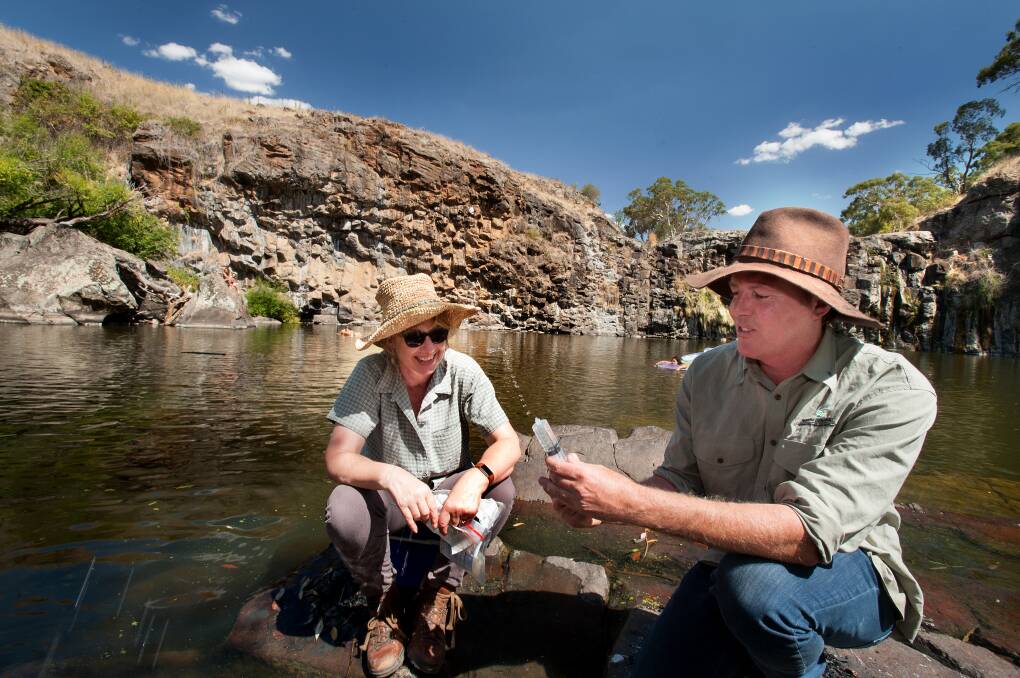
PLATYPUS DNA has been detected at five critical refuge areas along the Coliban River as part of a project which saw water samples collected and tested to determine if the elusive animals were living there.
Subscribe now for unlimited access.
or signup to continue reading
Project Platypus involved citizen scientists, including more than 300 students, and the Upper Campaspe Landcare Network working with platypus ecologist Josh Griffiths from EnviroDNA.
Mr Griffiths said the project, which collected samples from 20 sites, was a great example of the combination of innovative technologies and citizen science and how it can result in valuable data.
"It's the first time platypus distribution in the upper Campaspe/Coliban has been investigated.The results have shown platypuses remain fairly widespread through the upper Coliban system, although probably not in great numbers, but there are some serious concerns in the upper Campaspe.
"The sampling undertaken in February 2019 during a very dry period has been valuable to identify drought refuge areas for platypuses," he said.
Year 12 student Molly Spencer-Stewart from Alice Miller School in Macedon said learning about biodiversity and the importance of maintaining it in Australia was vital for the future.
"We're the leaders of the next generation and we need to be empowered with the knowledge to be able to act upon these issues like how to protect platypus," she said. "Having Josh here allowed us to participate in the steps towards documenting and protecting platypus in our area."
Fifty more sites will be tested along the rivers in spring during the platypus breeding season.

